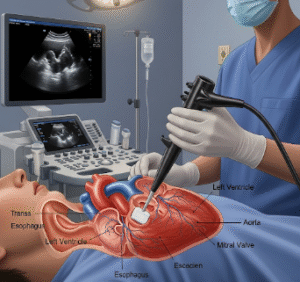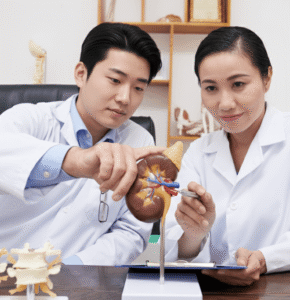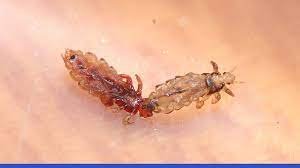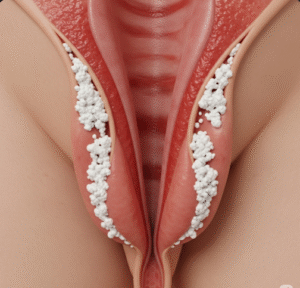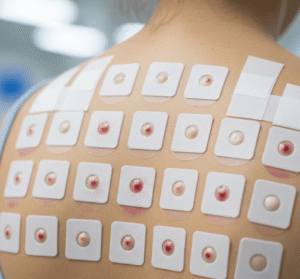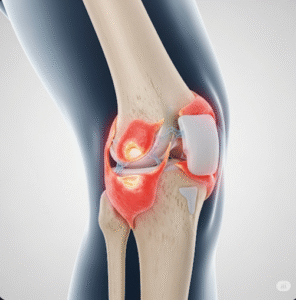Overview
Vaginal and groin irritation and infection refers to discomfort, inflammation, or infectious processes affecting the vaginal area and adjacent groin region. This condition can result from bacterial, fungal, viral infections, or dermatological irritants, and may significantly affect daily comfort, hygiene, and sexual health.
➤ Common symptoms include itching, burning, redness, abnormal discharge, or odor.
➤ Risk factors range from poor hygiene and tight clothing to sexually transmitted infections (STIs) and hormonal changes.
➤ In Korea, specialized gynecology and dermatology clinics offer diagnostic testing, treatment, and preventive education for such conditions.
Key Facts
► Definition: Inflammation, irritation, or infection of the vagina and groin area caused by infectious or non-infectious factors.
► Prevalence: Affects a large proportion of women at some point; common in sexually active adults.
► Associated symptoms: Itching, burning, soreness, redness, rash, abnormal vaginal discharge, odor, or pain during urination.
► Risk factors: Antibiotic use, hormonal changes, poor hygiene, tight clothing, diabetes, immune compromise, STIs.
► Treatment in Korea: Includes topical or oral medications, hygiene counseling, and treatment of underlying infections.
What Is Vaginal and Groin Irritation and Infection?
This condition occurs when the natural balance of the vaginal flora is disrupted, or the skin and mucosa of the groin are exposed to irritants, allergens, or pathogens.
➔ Vaginal infections include bacterial vaginosis, yeast infections (Candida albicans), and trichomoniasis (Trichomonas vaginalis).
➔ Groin irritation may be caused by fungal infections such as tinea cruris, eczema, contact dermatitis, or bacterial infections.
➔ Left untreated, infection can lead to chronic discomfort, pain, or complications in sexual and reproductive health.
What Symptoms Are Related to Vaginal and Groin Irritation and Infection?
Symptoms vary depending on the type and severity of infection:
→ Itching and burning in the vaginal and groin area.
→ Redness, swelling, or rash around the vulva or groin folds.
→ Abnormal vaginal discharge – white, yellow, gray, or green; may be thick, frothy, or clumpy.
→ Foul or unusual odor in the vaginal region.
→ Pain or discomfort during urination (dysuria).
→ Painful intercourse (dyspareunia) in women.
→ Skin cracking or sores in severe fungal or bacterial infections.
Causes / Possible Causes of Vaginal and Groin Irritation and Infection
Infectious Causes
➤ Bacterial vaginosis (BV) – Imbalance of vaginal bacteria causing grayish discharge and odor.
➤ Yeast infections (Candida albicans) – Thick, white, cottage-cheese-like discharge with itching.
➤ Trichomoniasis (Trichomonas vaginalis) – Yellow-green frothy discharge with odor and irritation.
➤ Sexually transmitted infections (STIs) – Chlamydia, gonorrhea, herpes simplex virus (HSV), human papillomavirus (HPV).
➤ Fungal infections of groin (tinea cruris) – Red, itchy rash in skin folds.
Non-Infectious Causes
➔ Irritants – Soaps, detergents, scented wipes, tight clothing, or synthetic fabrics.
➔ Allergic reactions – Personal hygiene products, latex, or topical creams.
➔ Hormonal changes – Menopause, pregnancy, or menstrual cycle can increase susceptibility.
➔ Poor hygiene – Moisture retention or improper cleaning can lead to irritation.
Other Contributing Factors
→ Antibiotic use – Disrupts normal vaginal flora.
→ Diabetes or immunodeficiency – Increases risk of infections.
→ Obesity – Skin folds may trap moisture and bacteria, promoting fungal growth.
When Should I See My Doctor?
Seek medical evaluation if irritation or infection:
➤ Persists more than a few days or recurs frequently.
➤ Is accompanied by abnormal discharge, foul odor, sores, or bleeding.
➤ Causes pain during urination or sexual activity.
➤ Occurs during pregnancy or in patients with diabetes or immune compromise.
➤ Early evaluation prevents complications like pelvic inflammatory disease, chronic infection, or skin breakdown.
Care and Treatment
Lifestyle and Self-Care Measures
► Maintain proper hygiene, washing with mild, unscented soap.
► Wear loose, breathable cotton underwear.
► Avoid tight clothing and prolonged moisture exposure.
► Refrain from using douches, scented wipes, or harsh topical products.
► Practice safe sexual behavior, including barrier protection.
Medical Treatments
➔ Topical antifungals for yeast or tinea infections.
➔ Oral antifungals or antibiotics for persistent or severe infections.
➔ Antivirals for herpes simplex infections.
➔ Treatment of STIs according to Korean STD management guidelines.
➔ Symptomatic relief: soothing creams, sitz baths, or anti-itch medications.
Procedural and Advanced Interventions
→ Laboratory testing – Vaginal swabs, urine tests, and cultures to identify pathogens.
→ Skin biopsy in chronic groin rashes to rule out dermatological disorders.
→ Multidisciplinary care in recurrent infections or complicated cases, involving gynecology, dermatology, and infectious disease specialists.
Treatment Options in Korea
Diagnosis in Korea
➤ Vaginal and skin swabs for microbiological analysis.
➤ STI screening including chlamydia, gonorrhea, HIV, and HPV.
➤ Blood tests for glucose, immune status, and hormonal assessment.
➤ Dermatological evaluation for tinea or contact dermatitis.
Non-Surgical Care
► Topical or oral antimicrobials for infections.
► Patient education on hygiene, clothing, and sexual practices.
► Follow-up to ensure resolution of infection and prevention of recurrence.
Advanced Care
➔ Minimally invasive procedures if abscesses or chronic lesions are present.
➔ Multidisciplinary approach for recurrent or resistant infections.
➔ Integration with sexual health clinics for counseling and STI management.
Rehabilitation and Lifestyle Support
→ Education on personal hygiene, moisture control, and prevention of reinfection.
→ Ongoing monitoring in pregnancy, post-surgical, or immunocompromised patients.
→ Support for sexual and reproductive health maintenance.
Korean hospitals combine expert gynecologists, dermatologists, and infectious disease specialists, advanced laboratory diagnostics, and patient-centered care to effectively manage vaginal and groin irritation and infections.


